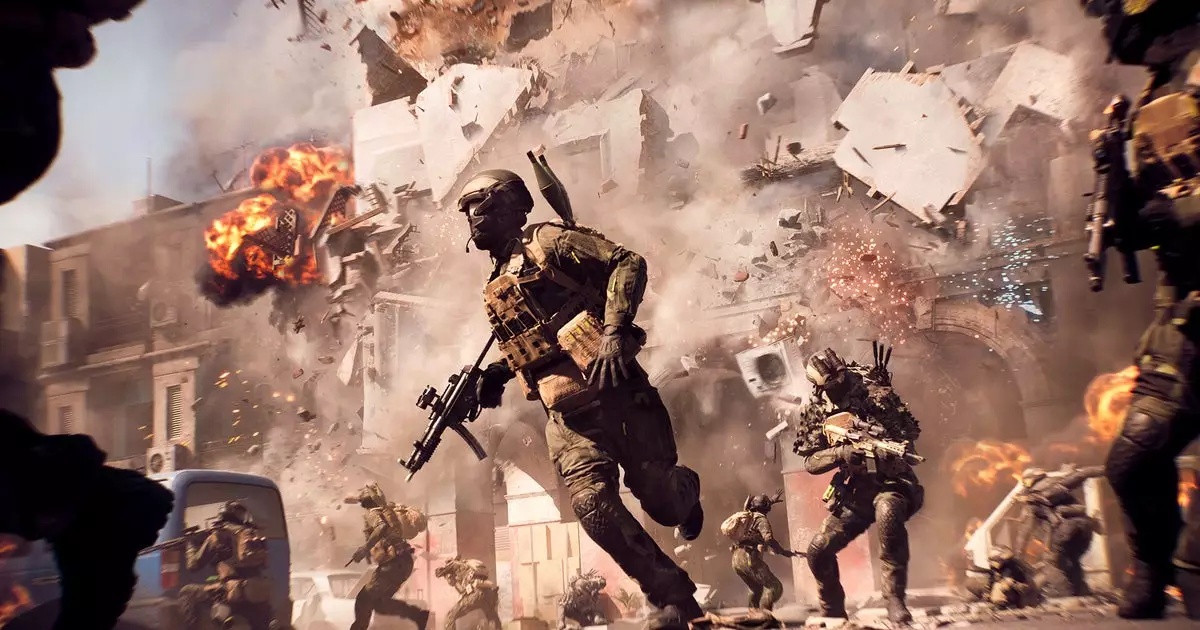The highly anticipated reveal of Battlefield 6 has set a wave of excitement and curiosity within the gaming community. As digital warfare landscapes evolve with every installment, this latest release promises not merely an expansion but a transformation of the multiplayer experience. It’s evident that Electronic Arts (EA) has been keenly aware of the importance of making the game accessible to a broad spectrum of players, a strategy that could redefine how large-scale shooters are designed and experienced. The news regarding system requirements, for instance, suggests a careful balance between demands and inclusivity. With minimum specs seemingly within reach of mid-range gaming PCs, EA signals an intent to tap into a wider demographic, moving away from niche gaming hardware to mainstream setups. This approach reflects an understanding that the future of multiplayer gaming hinges on breaking down barriers, making high-quality experiences available without necessitating the latest cutting-edge rigs.
Furthermore, the decision to not specify precise frame rates or graphical quality at the minimum and recommended settings demonstrates a confidence in the game’s adaptability. It suggests that Battlefield 6 will likely optimize itself dynamically, possibly leveraging advanced rendering techniques or AI-driven graphics. This could lead to more consistent performance across a variety of hardware configurations, promoting a more seamless multiplayer environment. Such advancements indicate that the game’s architecture is designed not just for high-end users but for a future where gaming hardware becomes increasingly democratized, broadening the audience and fostering a more inclusive online community.
Digital Distribution and Platform Nuances
Another noteworthy aspect centers on the game’s distribution and platform-specific requirements. Battlefield 6’s launch strategy appears attentive to players’ preferences—those who prefer Steam can enjoy a smoother experience with fewer hoops, as the game doesn’t mandate EA’s proprietary launcher. Conversely, players opting to purchase through Epic Games face additional hurdles, needing both the EA app and an EA account to access the game. This differentiation underscores the ongoing fragmentation within the digital storefront landscape, a reality players are often resigned to but rarely enthusiastic about.
What’s most intriguing is EA’s stance on platform independence. The reassurance that players will not need prior knowledge of previous Battlefield titles suggests a fresh entry point for newcomers—a possible attempt to attract a broader audience beyond the franchise’s existing fan base. Yet, it also hints at EA’s confidence in the standalone quality of Battlefield 6, emphasizing that understanding the game’s core concepts will not be a barrier to enjoyment. This strategic choice might serve to boost day-one sales by eliminating entry barriers and fostering a sense of freshness, ensuring players feel encouraged to dive into the chaos without apprehension.
Anticipating a Turbulent Launch and Evolving Expectations
Despite the optimistic tone surrounding Battlefield 6, history warns us about the pitfalls of big-game launches. EA’s past releases have occasionally suffered from bugs, performance issues, and server instability. Notably, the game’s launch timing, combined with the complexity of supporting multiple hardware configurations and platform variants, suggests that players should temper their expectations. The absence of detailed performance metrics for different settings means that early adopters will likely face a period of adjustment, troubleshooting, and possibly disappointment.
Nevertheless, EA’s transparency—though cautious—about future updates and additional details hints at an evolving support ecosystem post-launch. The community’s resilience and the company’s commitment to refinement could determine whether Battlefield 6 becomes a hit that solidifies its legacy or a cautionary tale about overpromising and underdelivering. With the gaming industry continuously pushing technological boundaries, EA’s endeavor to balance ambitious feature sets with pragmatic hardware requirements will be crucial in shaping the game’s destiny.
A Transformative Shift in Multiplayer Warfare
Ultimately, Battlefield 6 is positioned as more than just a new entry; it’s a statement about the future of competitive online shooters. Its design choices, from accessible system specs to platform flexibility, suggest an intention to democratize digital combat while leveraging cutting-edge technology. If EA manages to deliver on the promise of smooth gameplay, innovative mechanics, and robust support, this release could redefine multiplayer gaming standards. It’s a bold step toward making the chaos of war more accessible, immersive, and engaging for a multitude of players worldwide—marking a pivotal shift from hardware-dependent exclusivity to shared virtual battlegrounds where everyone has a shot at victory.

